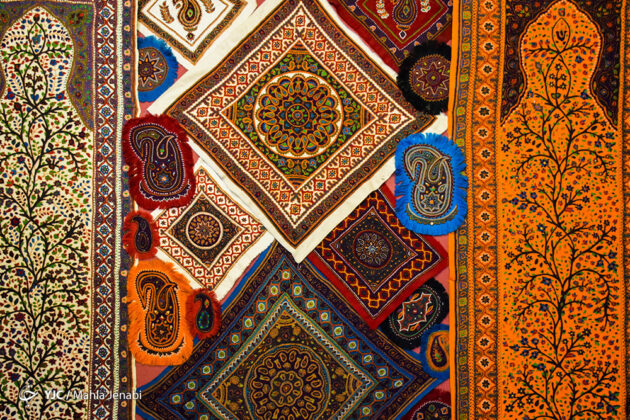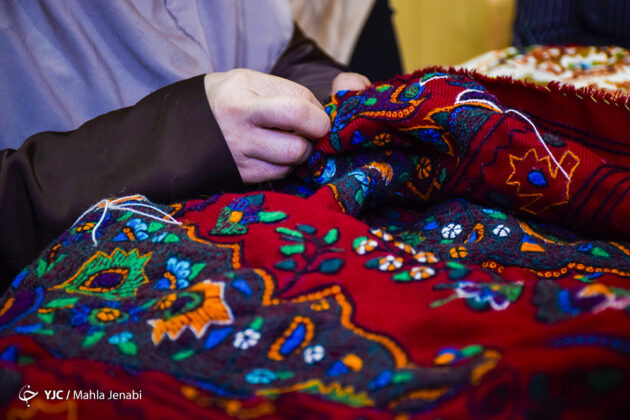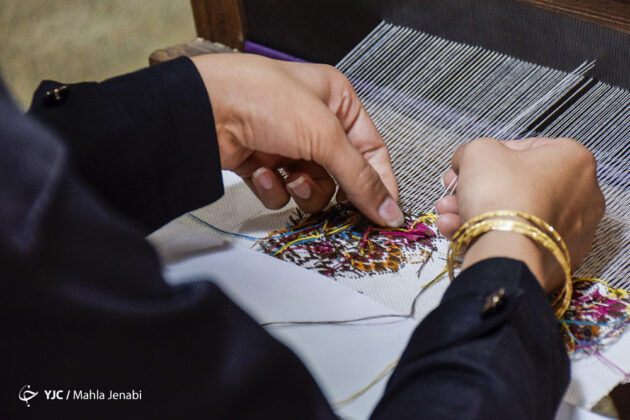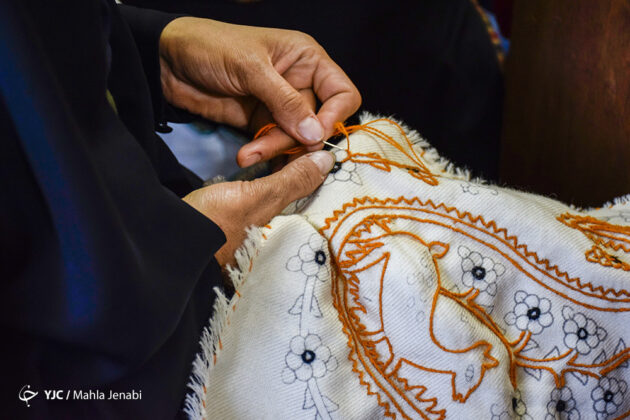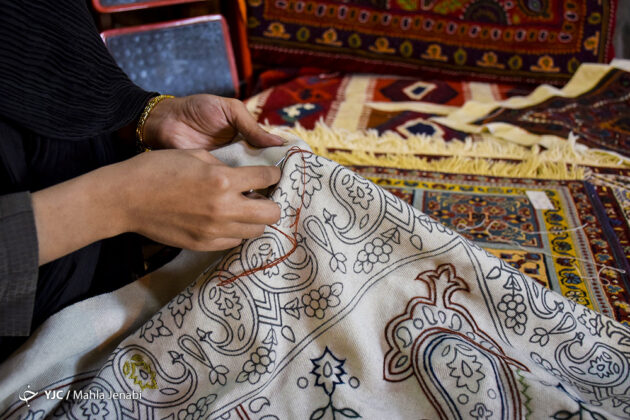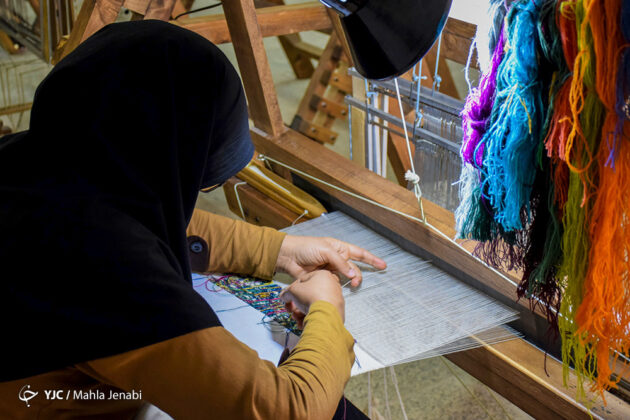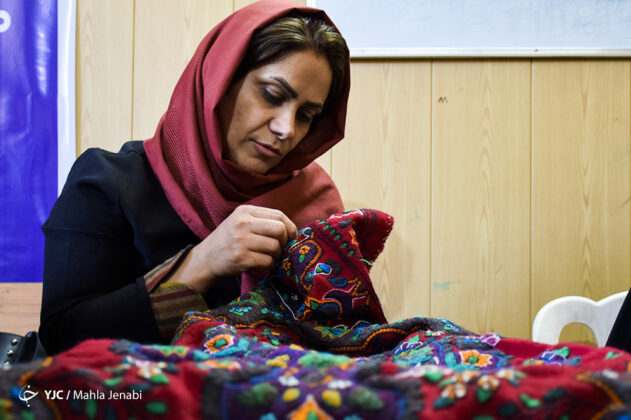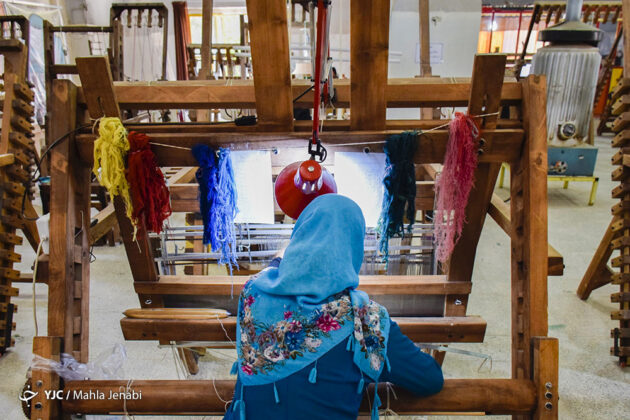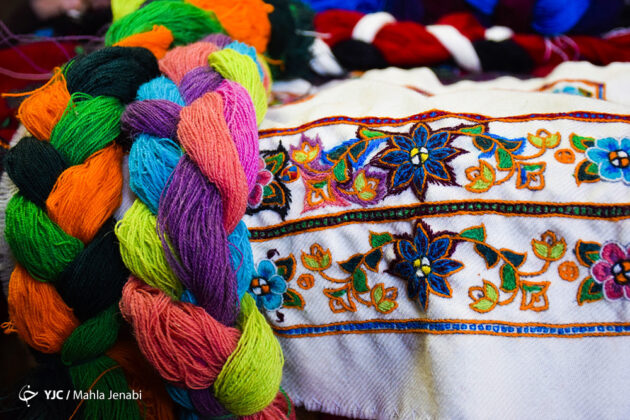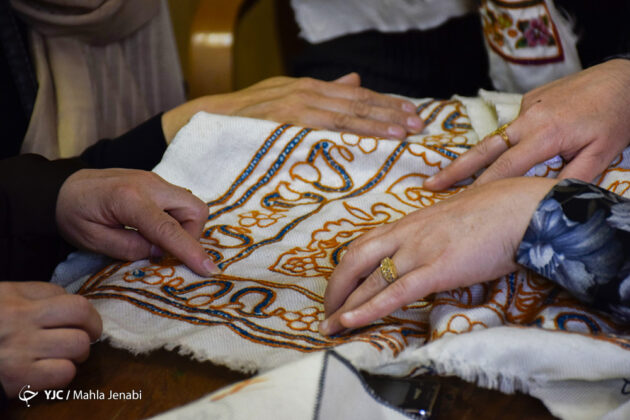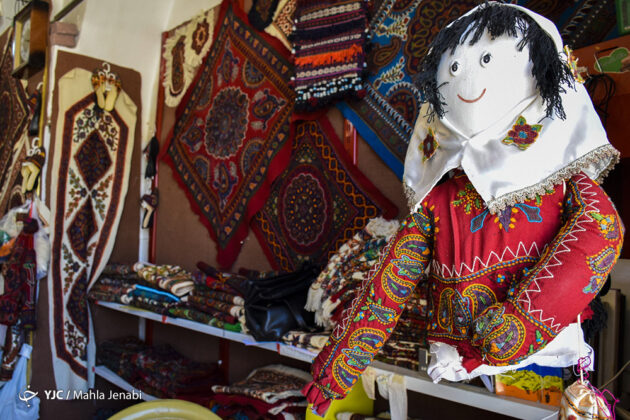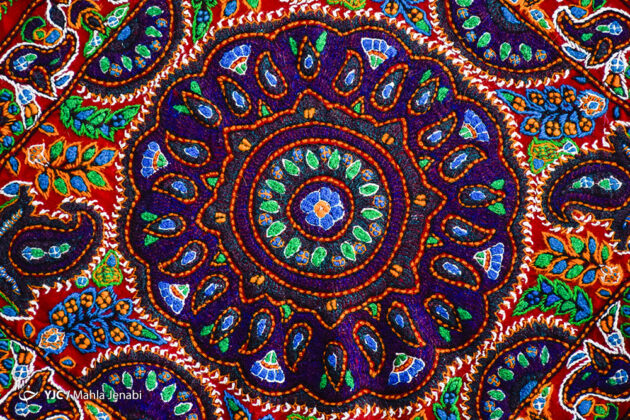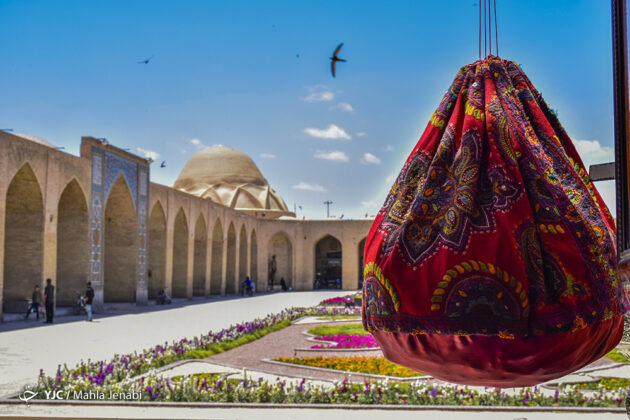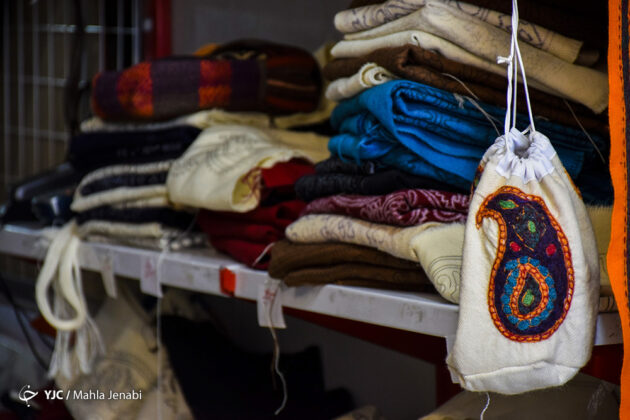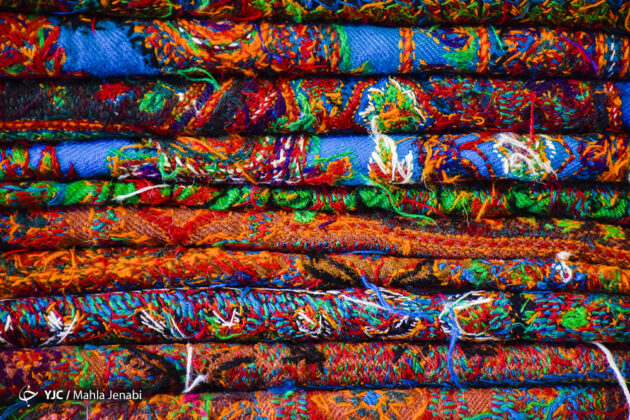Pateh-sewing, which literally originated in Pat or goat’s wool, is prepared after combing in form of a fabric. It is an ancient needlework style performed on a wool fabric called shawl.
Kermani women and girls do needlework on thick fabrics which are called Ariz. Pateh needlework is done in silk and with flourishes of paisley patterns. Popular designs include the cypress tree and the sun.
The threads used in this art are woolen, elegant and colorful. They are mostly black, green, yellow, orange, red, white and blue.
Although the exact origin of Pateh-sewing is unclear, it has been referred to in Safavid era travelogues.
In the various art books, the oldest sample of Pateh belongs to 1285 AH. One of the oldest samples of Pateh is the one coated on the grave of Shah Nematollah Vali in Kerman’s Mahan. Shah Nematollah Vali was a Persian poet from the 14th and 15th centuries. This is one of the most beautiful examples of Pateh needlework.
At present, Pateh needlework is carried out on praying rug, Quran covers, tablecloth, etc.
Below, you can see photos of Pateh needlework by Kermani women retrieved from Young Journalists’ Club:

